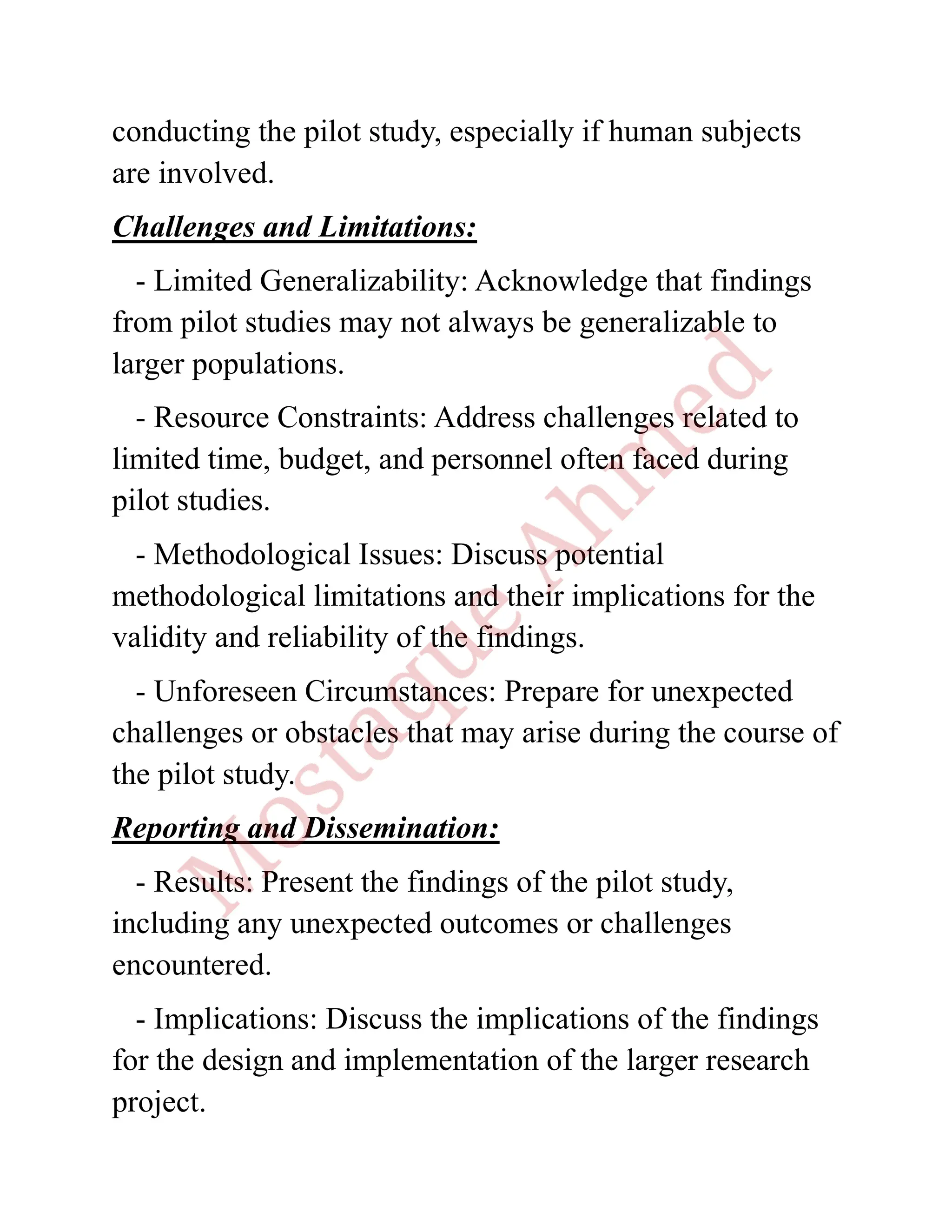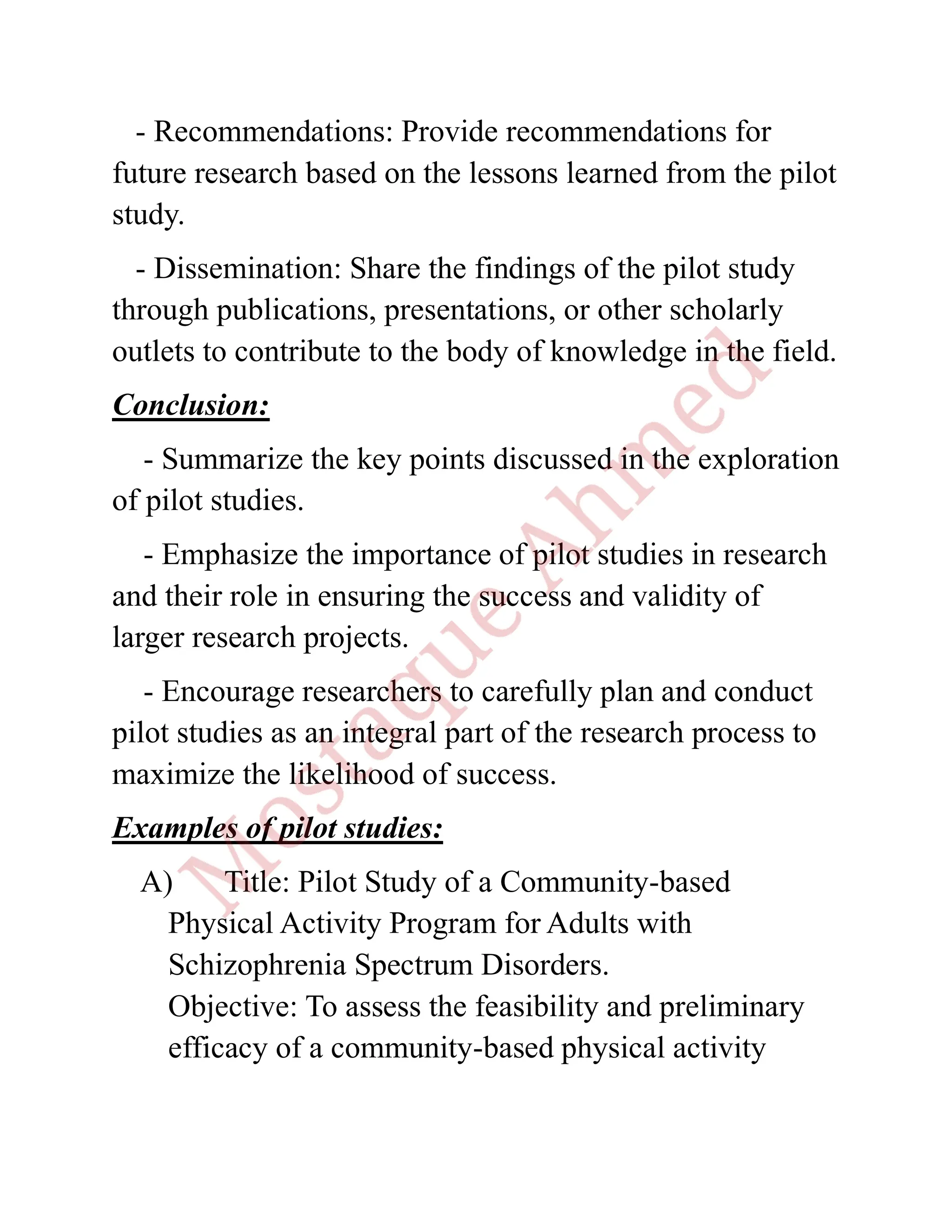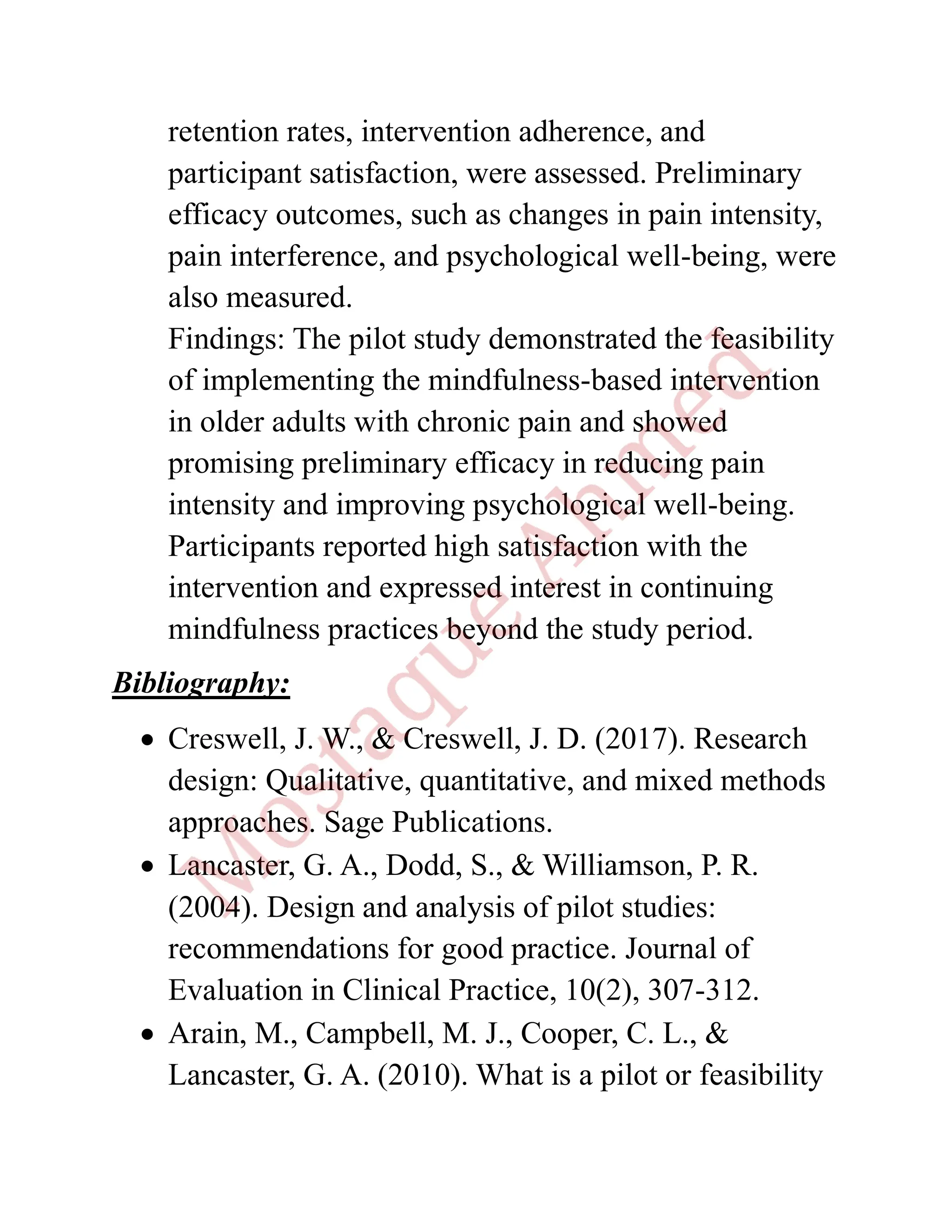A pilot study is a small-scale research project designed to assess the feasibility, time, cost, and potential limitations of a larger study, ensuring its success by identifying and addressing potential issues in advance. The document outlines the key objectives, types, design considerations, data collection methods, and ethical considerations associated with pilot studies, emphasizing their vital role in research planning. Additionally, it provides examples of pilot studies in various fields, demonstrating their feasibility and preliminary efficacy in specific interventions.











